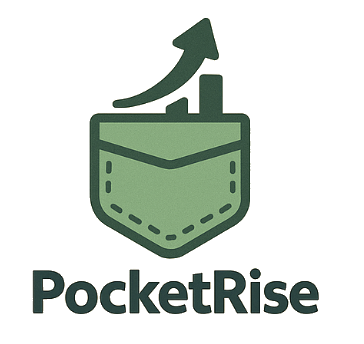Are you in your 20s and wondering how to start investing when money is tight? Good news: you don’t need thousands of dollars to build wealth. Even if you’re broke or just getting started, small steps now can lead to major financial wins later.
Let’s break down exactly how to begin investing in your 20s, even with limited funds.
Why Start Investing in Your 20s?
Starting early is the most powerful advantage you have. Thanks to compound interest, even small investments today can grow into a meaningful nest egg over time.
Here’s why your 20s matter:
- More time for your investments to grow
- Lower financial responsibilities = more flexibility
- Building habits early sets you up for long-term success
💡 Example: Investing just $50/month at age 25 could grow to over $120,000 by retirement, assuming a 7% annual return.
Step 1: Set Up Your Financial Foundation
Before you dive into investing, make sure your finances are ready:
- Create an emergency fund – Aim for at least $500–$1,000
- Pay off high-interest debt – Focus on anything above 10% interest
- Start a budget – Know exactly how much you can invest each month
These steps reduce financial stress and help ensure you’re investing from a stable place.
Step 2: Choose the Right Investment Account
You don’t need to be rich to open an investment account. Here are three great options for beginners:
1. Open a Roth IRA
A Roth IRA lets you invest post-tax dollars today and withdraw tax-free in retirement.
- Ideal for people in lower tax brackets
- Contributions can be withdrawn any time (no penalty)
- Max contribution (2025): $6,500
2. Use a Brokerage Account
Brokerage accounts give you access to thousands of stocks, ETFs, and index funds. Many platforms allow fractional shares, meaning you can start with just $1.
Popular beginner-friendly brokerages:
- Fidelity
- Vanguard
- Charles Schwab
- SoFi Invest
- Public
- Robinhood
3. Try a Robo-Advisor
Want to automate everything? Robo-advisors like Betterment, Wealthfront, and Ellevest build and manage your portfolio based on your goals.
Step 3: Start Small and Stay Consistent
Consistency beats intensity.
Even $20 or $50/month can grow significantly over time. Set up automatic contributions so you don’t have to think about it.
Remember: the goal is to build the habit, not go broke trying to invest.
Step 4: Choose Beginner-Friendly Investments
Here are safe and simple options to grow your money over the long term:
- Index Funds – Low-fee funds that track the entire market (e.g., VTI, FXAIX)
- ETFs – Like index funds, but traded like stocks
- Target Date Funds – Adjust automatically as you near retirement
Avoid risky options like crypto, meme stocks, or day trading when you’re just starting out.
Step 5: Keep Learning as You Grow
Financial literacy is a lifelong skill. The more you learn, the better your decisions.
Great places to start:
- Books:
- The Simple Path to Wealth by JL Collins
- I Will Teach You to Be Rich by Ramit Sethi
- Podcasts:
- How to Money
- The Money Guy Show
- Blogs & Newsletters:
- Subscribe to personal finance blogs like this one
- Follow reliable financial news sources
Final Thoughts
Starting to invest in your 20s doesn’t require a lot of money — just a commitment to your future self.
- Begin with what you can afford
- Use beginner-friendly platforms
- Stick to simple investments
- Keep learning and adjusting
You don’t need to do everything perfectly. You just need to start. And today is the best time to do it.



